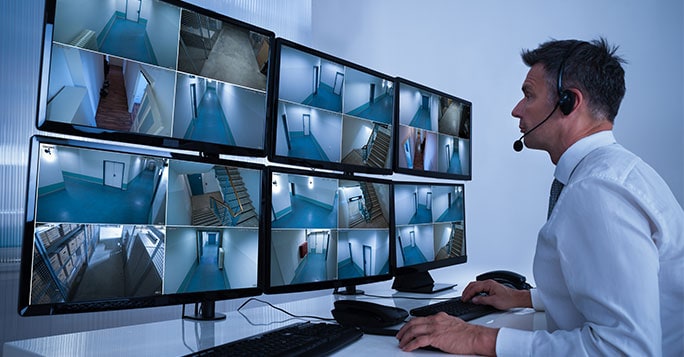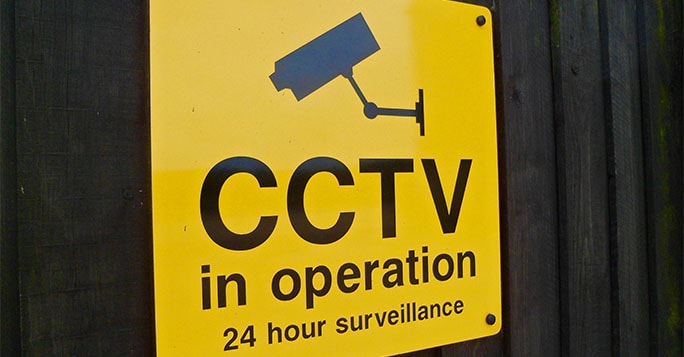As is the case with all other technology that impacts your business, it’s imperative that security cameras are kept up-to-date and, most importantly, always remain secure. The footage they capture can reveal business-critical information that ultimately keeps your organisation, and the people within it, safe. They should therefore be poised at all times to provide essential evidence on demand, stay firmly protected against failure or data breaches, and always be recording.
The problem is, achieving this is by no means an easy feat with more traditional IP-based camera systems. While CCTV and on-site security cameras have come a long way since their older analog cousins, IP cameras still have a lot further to go. They cause frequent headaches and pain points for IT teams everywhere, if only due to their inflexibility, snowballing costs, and heavy reliance on time-consuming manual searches.
We’ve taken a close look at traditional IP camera systems and unearthed a number of key flaws that we feel can be avoided by turning to Cisco’s Meraki Vision (MV). This is the first in a series of three articles we will be writing on Cisco Meraki, so you can look forward to even more insights into the world leader in cloud controlled Wi-Fi, routing, and security in the weeks ahead.
Here’s why we believe Cisco MV is a fantastic solution to the challenges IP cameras present.
Security
The irony is, as much as security cameras can protect your business, they can also be seen as a significant vulnerability. If software is not updated regularly and user access policies not specified, traditional IP cameras can become a prime target for cybercriminals and hackers, meaning both your footage, and confidential business-critical data, is put at risk.
Why Meraki: Given Cisco’s longstanding heritage in security, users can rest assured that MV was developed with the highest security standards at its core. As such, security features are in-built, including important two-factor authentication and the peace of mind that all local video and management data is encrypted. Likewise, any new security updates and software are pushed through automatically, all completed FoC within the parameters of the original licensing model.

Valuable time
Watching footage can be a laborious task, especially when having to manually comb through hours of irrelevant footage just to reach the event you’ve been searching for. Tying up the time of IT and security personnel in this way means less time innovating or using their skills more productively elsewhere.
Why Meraki: Meraki’s Motion Search function allows users to home in on key events by highlighting a specific area of interest within the captured footage. The software will then search its memory for any activity within that specific region and return any results. Users can simply click onto these results and fast-track the footage to their desired point in time, saving a lot of valuable effort. You can even set up event triggers for the system to alert you when certain events occur, helping you to respond faster.
Storage capacity
Storage is one of the biggest considerations when it comes to security footage. Typically, IP cameras will store their footage on Network Video Recorders (NVRs), and while this isn’t much of a problem for smaller businesses, it does cause complications for organisations who need greater storage capacity across multiple sites. In short, as more NVRs are deployed, the cost begins to ramp up, making scalability much more difficult.
Why Meraki: MV doesn’t need NVRs for storage, or the cloud either – footage is instead stored inside every one of its cameras. It was purpose-built for scalability, so will even trim stored footage that it recognises contains no motion or activity, substantially cutting down the need for storage capacity, and freeing up all-important network bandwidth.

Identifying failures
This is a regular complaint from users of IP cameras – it’s very tricky to know if and when a camera has failed, and this is mainly down to the transfer of the footage to the NVR. If there is a network issue or at any point the connection is lost, that data does not reach the NVR and could potentially never be recovered. Frustratingly, the only way of knowing if a traditional IP camera has lost its connection would be to watch back the footage and discover when the failure took place.
Why Meraki: Because of the fact that MV cameras are self-sufficient from a storage perspective, they can therefore work autonomously. If they do experience unexpected downtime, they’ll carry on recording, with or without a connection.
Visibility
Many traditional IP cameras do not have the flexibility of being centrally managed via a single platform, meaning that they generally need to be dealt with independently. This tends to involve having to move between multiple products to get an accurate view of the entire network, resulting in a disjointed experience that actually limits visibility. This is combatted in part by third-party Video Management Software (VMS), however, this merely presents an additional cost that shouldn’t be necessary.
Why Meraki: MV grants users a consistent experience across the board. Its centralised browser-based management dashboard not only allows for universal visibility via a single pane of glass, but also sees users able to securely monitor cameras on any device from anywhere in the world. What’s more, only one login is required to view the entire Meraki network.
Cisco’s Meraki Vision is already making a huge difference to businesses all over the world, and has proven itself as a considerable step forward in the modernisation of security cameras. Supporting over 1 million networks globally, and boasting 99.99% uptime, MV brings a little bit of magic to your security camera solution.
You may also be interested in
It’s official! CCS Media and Servium are now Advania
Advania have now officially completed the integration of CCS Media and Servium.
All you need to know as CCS Media and Servium become Advania
On 4th August 2025, CCS Media and Servium will become Advania. Work is underway to make the transition as smooth as possible, but there will be some important changes. Find out about what’s changing and what’s staying the same.
A new name for CCS Media & Servium is coming
This summer, Advania UK companies CCS Media and Servium will change their names to better reflect the unified business. Together, we will all be known as Advania.
 Darren Cooke
Darren Cooke






